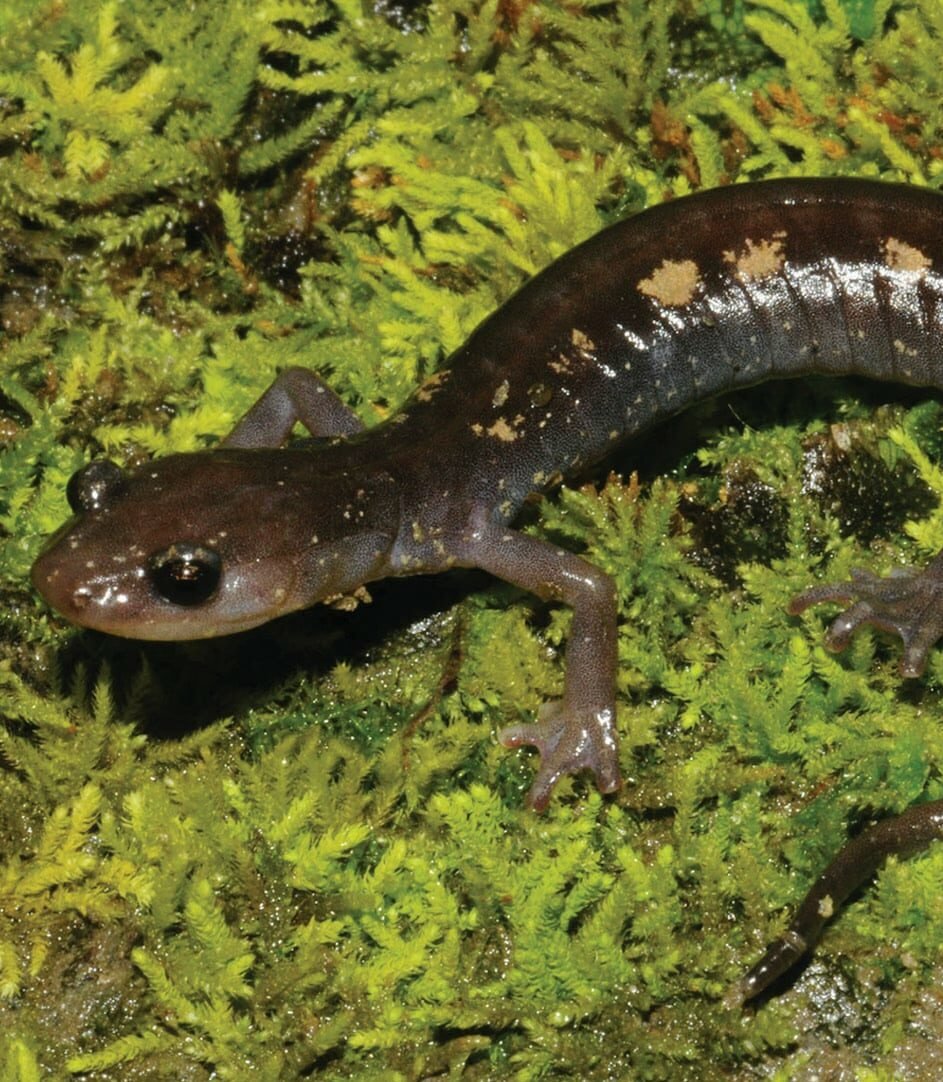The region’s rich biodiversity isn’t well known, but we should be shouting it from the mountaintops.
The southern landscape lends itself to secrecy. Its hidden hollers and dark forests are shadowy places.
But it’s time for the South to spill one of its most important secrets. It’s a little-known hush-hush that should be shouted from the Southern Appalachian mountaintops. And it should be a source of pride that runs as deep as college football: when it comes to biological diversity, the South is #1.
Most folks think that the purple mountain majesties out West shelter the most wildlife. The vast Western landscapes are home to a lot of large, charismatic wildlife. But the most biologically diverse place in the country is actually right here in our backyard: the South is the most species-rich spot in the U.S. and a global biodiversity hotspot.
Why?
We’re ancient. We’re one of the oldest places on the planet. The Appalachian Mountains first formed around 500 million years ago, which has given life a long time to flourish and diversify.
The South also escaped thousands of years of Ice Age glaciers that covered most of the continent. During that time, many carpetbagger species from the North found refuge here.
In addition, the South has an astonishing diversity of landscapes: atop the Southern Appalachian summits are cold-adapted species commonly found in Canada. Just a few hours away, the marshes, estuaries, and rivers of the Southern coastal plain are teeming with life.
We’re also hot, wet, and wild. Parts of the South are temperate rain forests with more annual rainfall than Seattle. As a result, the South is a global hub of aquatic species—especially salamanders, mussels, crayfish, aquatic reptiles like sea turtles, and fishes. We have the most aquatic species of any temperate region in the world.
Bragging Rights
Why are we not celebrating the astonishing biodiversity that resides here? We have a lot of bragging rights at stake.
For example, the South is the salamander capital of the world. More species of sallies are found here than anywhere else on the planet.
When it comes to fish, trout and bass are the most popular, but the South also harbors nearly 500 other species of fish—that’s 62 percent of all fish species in the U.S. They display a stunning variety of colors and adaptations. One group of fish called darters talk to each other using underwater knocks, groans, and purrs. Virgin births have been documented in Florida sawfish.
The South also boasts 269 species of mussels—more than 91 percent of all mussels nationally. Mussels are the ultimate impostors. These bivalves are usually fastened to rocks and don’t move around much, so they have devised a dastardly deceptive way to transport their babies: they create “lures” out of their fleshy parts to look like minnows. Mussels have engineered these fake minnows even though they are completely blind. When an unsuspecting fish tries to eat the fake minnow, the female mussel sprays her fertilized eggs into the mouth and gills of the fish. That host fish carries her babies to other parts of the river.
So What?
Does any of this matter? Who cares about a bunch of slimy salamanders hiding under rocks? What do mussels do for us?
It turns out that mussels are better than Brita when it comes to water filtration. Mussels clean the water we drink: a single mussel filters up to 20 gallons of water a day. Mussels once blanketed riverbeds by the billions, but today, they are disappearing faster than any other group of animals.
Pound for pound, salamanders are the largest source of biomass in Southern forests. They are feeding a lot of the critters that feed and nourish us. And fishing is synonymous with Southern pride—whether casting into a lake or fly-fishing in Appalachian headwaters.
There’s no clearer example than Alabama. Home to way more than football championships, ‘Bama also has the most freshwater fish and turtles of any other state in the country.
Most Endangered
Unfortunately, the South is tops in another wildlife category: most endangered species. We lead the nation in total number of endangered species (with the Hawaiian Islands close behind). Southern endangered species include everything from the orangefoot pimpleback pearlymussel to the red wolf: The South is home to the last red wolves, and fewer than 15 remain in the wild.
Dams, logging, mining, and development are the main causes. Climate change and invasive species are making things even worse. We are facing an extinction crisis.
What can we do? Taking pride in our Southern natural heritage is a good place to start.
Perhaps we can extend Southern hospitality to the species clinging to survival. We can make space for them and the last scraps of their habitat, no matter the cost.
And in a region that prides itself on deep roots, maybe we can defend the generations of native residents who have been here long before we were.
We’ve got a lot to be proud of. Let’s fight for it.
A Tale of Two Sallies
Two salamander species found only in the South have recently been proposed for Endangered Species Act protections. These sallies have called Southern Appalachia home for tens of millions of years, but they could soon go extinct without urgent help.
The yellow-spotted woodland salamander lives only on rock outcrops in central Appalachia—the same places targeted for mountaintop removal coal mining. Yes—that’s still happening. We’re still blowing up mountains to reach the coal seams below. 56 new mountaintop removal permits were issued in the past three years—all in the yellow-spotted woodland salamanders’ range. Only a few thousand yellow-spotted woodland salamanders remain.
The Hickory Nut Gorge green salamander is found only in the 14-mile Hickory Nut Gorge just southeast of Asheville, N.C. Development and habitat loss are the biggest threats to this species, and climate change is making things worse for this gorgeous, green-splotched arboreal salamander. It has been clinging to these gorge walls for millions of years. To keep holding on, it needs the U.S. Fish and Wildlife Service to list it as an endangered species.
Cover Photo: A Yellow spotted woodland salamander. Photo by Kevin Hutcheson








